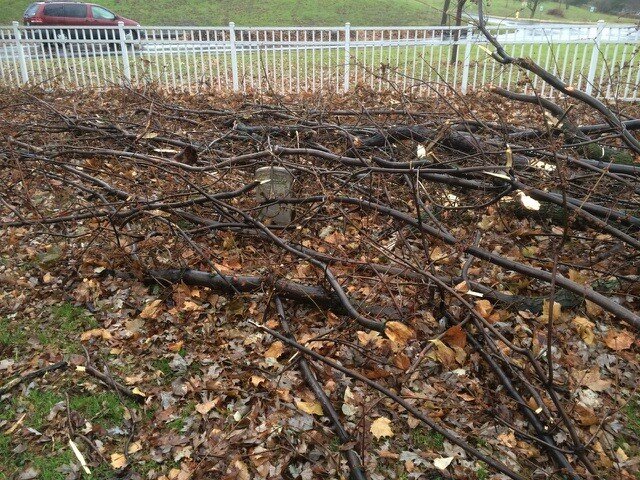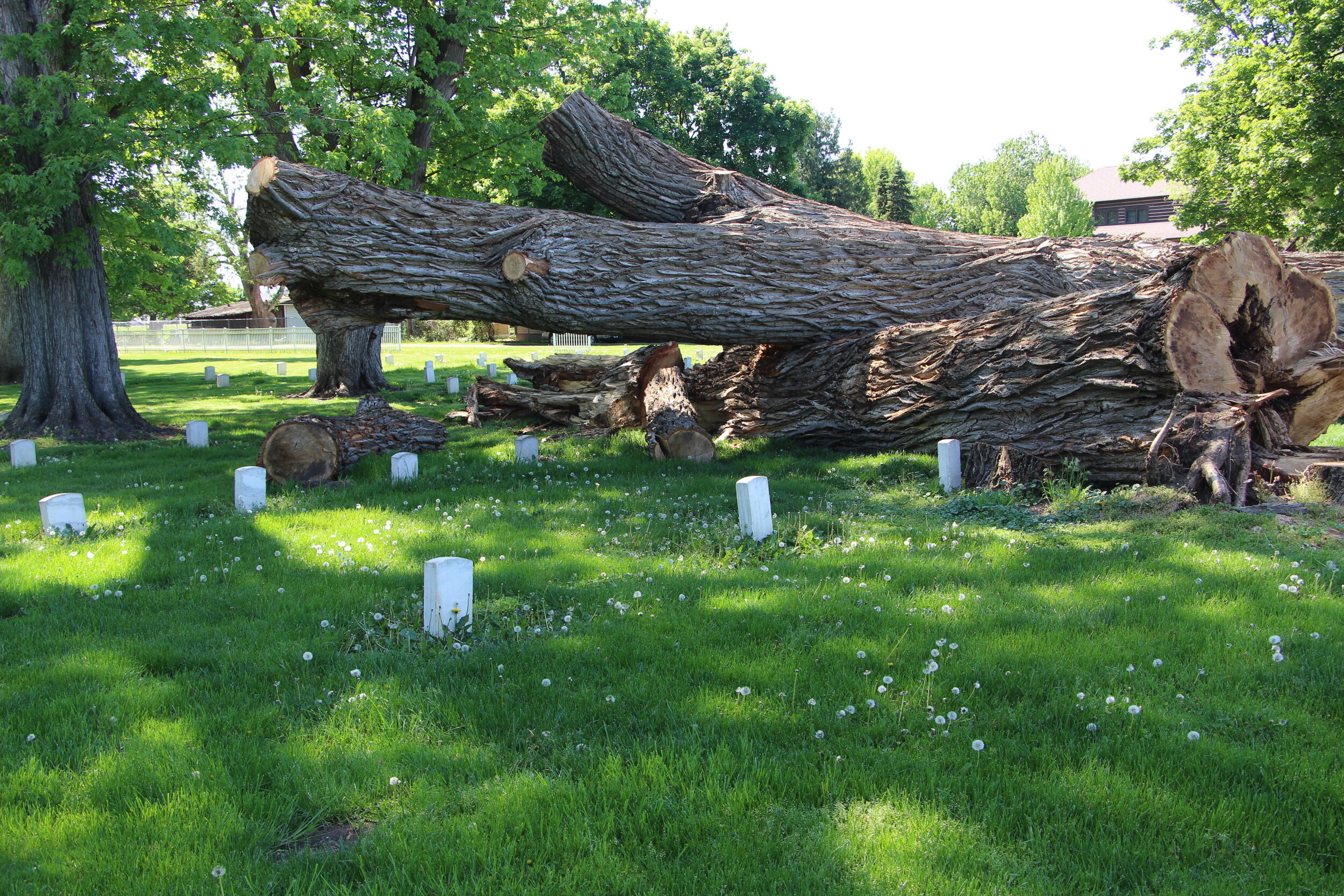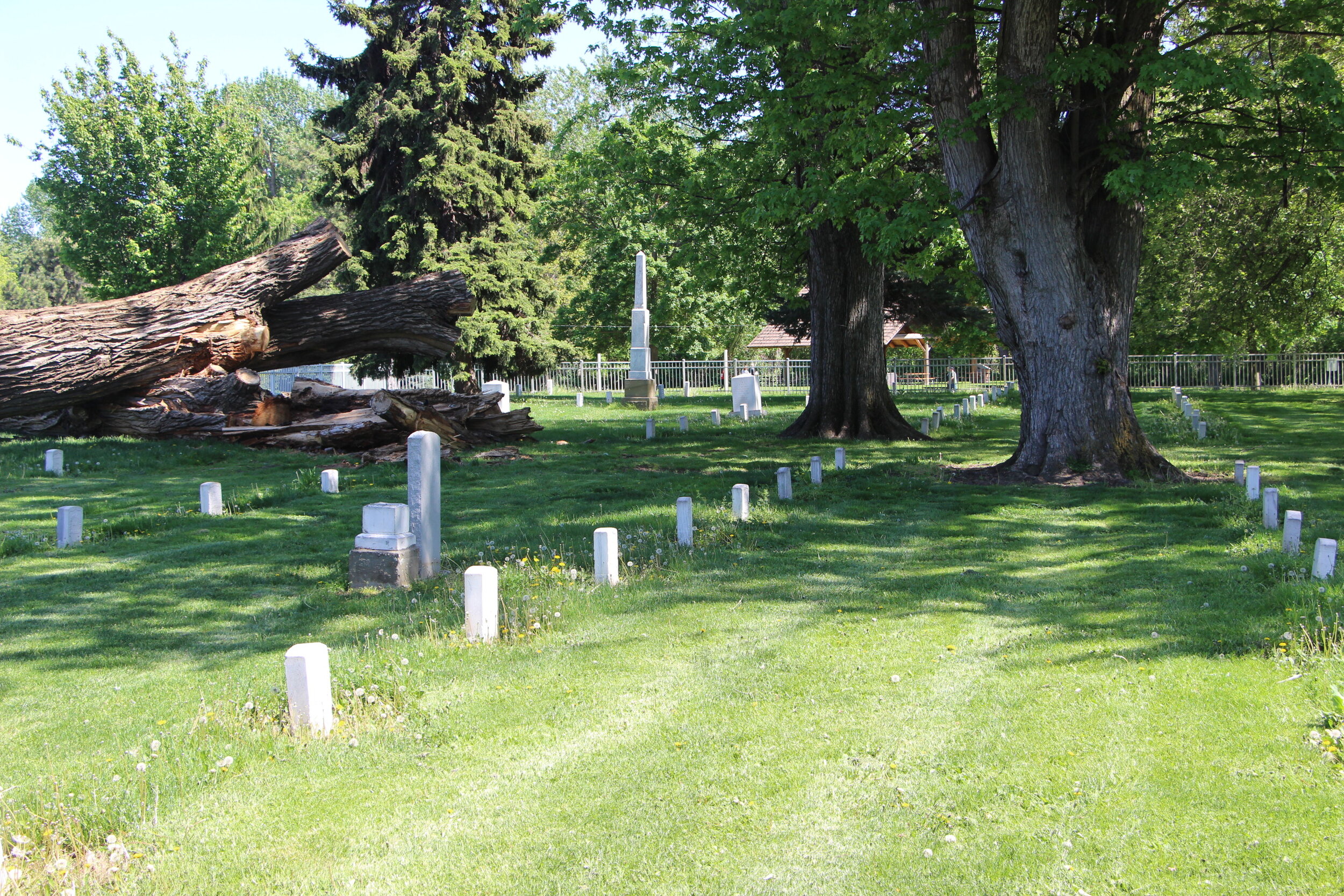Fort Walla Walla Cemetery in the early 1900s. Note the tilt of the obelisk and size of the saplings.
Have you ever wondered about the old graveyard next to Fort Walla Walla Museum? Staff is frequently asked about this old place, how old it is, and who is buried there. Many want to know if it's haunted. While we've never seen a ghost, we do have some other information to share.
The Fort Walla Walla Cemetery, established in 1858, contains burials of soldiers from most of the regiments who served at this post, including the 1st Dragoons: 1st Oregon Cavalry; 1st Oregon Infantry; 1st Washington Territorial Infantry; 2nd, 9th, and 21st Infantry; 1st, 2nd, 4th, 9th, and 14th Cavalry; and the 30th Artillery. Private Jacob Leonard, Company B, 9th Infantry, represents the oldest known burial in the cemetery, dating to February 3, 1859.
Also buried here are soldiers killed in the Battles of Cottonwood and White Bird Canyon during the Nez Perce War. An unnamed Nez Perce Indian, an unknown Indian prisoner, and another unknown Indian person are also interred here, along with some of the soldiers' spouses and children.
In 1889, fifty-one headstones were placed in the cemetery. At that time, twelve additional stones were requested to correct errors, but only four were authorized. Further work was done in the cemetery in 1906 when several of the graves were realigned.
Poor Sergeant William W. Cramblet had his name misspelled on more than one headstone.
During excavations for new a utility installation at the museum in 2001, a work crew discovered ten tombstones underground. An archaeological investigation was undertaken, and the five stones within the utility trench were removed. These tombstones contained errors that were replaced with new corrected stones in 1889. While Colonel Eugene M. Baker (1837-1885) had been given a tall monument for his headstone, it did not comply with military regulations. It was replaced with a small slab similar to those used to mark the graves of all soldiers. The wording on two stones was changed from “Ordnance Department” to “Ordnance Sergeant.” A duplicate stone for James Riley, who served in the 1st Oregon Infantry during the Civil War, was also found. Sergeant William W. Cramblet, Company A, 1st Washington Territorial Infantry, died at the Fort on May 10, 1864. His name was misspelled as “Gramblett” on his first tombstone and as “Cramblett” on the 1889 replacement.
The stones throughout the cemetery are tilted at various angles from settling that occurred after placement. At least some of this happened shortly after installation. In a photo of the cemetery from the early 1900s, the obelisk for the Cottonwood battle dead can be seen at the same tilt as today. This early image shows many of the current large trees as mere saplings. In 2020, several of these trees, including the two large maples flanking the entrance gate, have been removed.
There was a strange occurrence associated with the cemetery during the wind storm that hit Walla Walla on January 8, 2008. Several large trees were blown down during that storm, including a conifer that crushed the cemetery’s white steel fence, crossed the road, and smashed the chain-link fence that surrounds the Pioneer Village. This tree fell in the narrow space between two historical buildings and landed on top of a dwarf willow tree next to the doctor’s office.
That willow had been planted at the request of Dr. Richard Simon Sr., a member of the Living History Company who portrayed pioneer physician and entrepreneur Dr. Nelson Blalock. Dr. Simon shared his knowledge of 19th-century medicine with museum visitors, including how aspirin was derived from willow bark.
This little tree was very important to Dr. Simon, and we were was saddened by its loss. We learned that he had passed shortly before the storm and wondered if he had taken the tree with him so he could continue his educational performances in the great beyond.
The cemetery markers have survived several devastating windstorms, where large limbs have fallen just shy of the stones.
A couple of years ago we had another wind storm that took down major sections of trees in the cemetery. Limbs as large as eighteen inches in diameter fell from two of the silver maples. After the storm, we noticed that heavy limbs had landed within six inches of one tombstone, twelve inches from another, two feet from another, and four feet from a fourth stone. Amazingly, no headstones were damaged. During a windstorm in early 2020, we found the same thing: limbs down all around the cemetery, and not a single stone was hit.
While we have never seen a ghost in this cemetery, it certainly has a presence. It doesn’t need ghosts to endure or draw people to visit and appreciate its long history. The cemetery is open year-round, so come by and pay respect to those who served at the fort!








